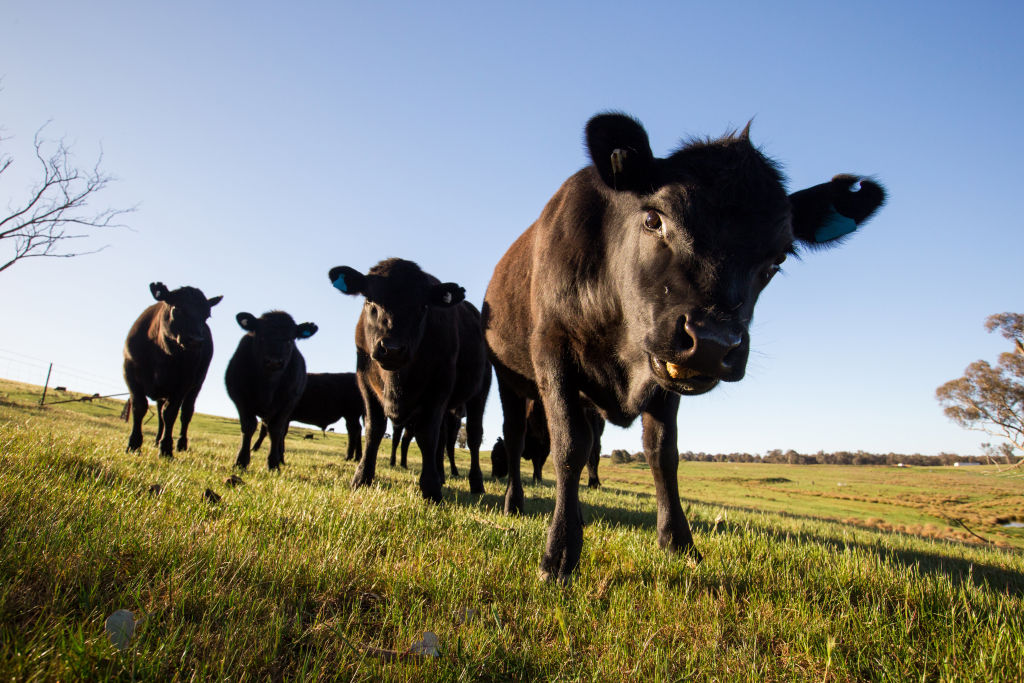
Positive signs for Australian agriculture despite falling prices, trade headwinds
Improved seasonal conditions are cause for optimism in Australia’s agriculture sector, but global trade headwinds and falling commodity prices could push export prices down in the year ahead.
The predictions are contained in the September Agriculture Commodities report from the Australian Bureau of Agricultural and Resource Economics (ABARES).
The report found that despite crop volumes improving dramatically on the back of favourable seasonal conditions, a combination of falling commodity prices, booming supply and reduced livestock sales meant that the gross value of production across all commodity types was forecast to remain static at $61 billion for the 2020-21 financial year.
“The value of crop production is forecast to increase by 17 per cent to over $32 billion on the back of much improved seasonal conditions, particularly in NSW,” said Dr Steve Hatfield-Dodds, executive director of ABARES.
Falling commodity prices for grains was largely due to an increase in global supply, according to Westpac senior economist Justin Smirk.
“[Commodity prices] are more around supply, the ebbs and flows of supply. Predominantly it’s seasonal conditions – we’ve had a run of good seasonal conditions globally and that’s led to an increased supply,” Mr Smirk said.
The resulting dip in commodity prices would have an uneven effect on production values across the country, with states such as WA, which has been enjoying good seasonal conditions for the past few years, the most exposed to price changes.
“That macro picture [of falling values] is correct, but speaking on a micro level, NSW has had severe drought in the past few years. For the entire country those farmers who have been doing well, they will see prices fall [but in] those areas which have been in drought for the past three years, they’re going to have a much better year,” Mr Smirk said.
Reduced livestock production can be directly attributed to an effort by farms to restock their properties following extensive herd reduction during the drought years, meaning fewer animals brought to market.
“The rebuilding of herds and flocks will also begin to hit overall production, with the value of livestock production forecast to fall by 14 per cent to $28.9 billion,” Dr Hatfield-Dodds said.
But the reduction in beef production should be treated as a good news story, according to Mr Smirk, as it was a sign of increased farmer confidence.
“When you go into a drought, livestock production goes up because everyone is de-stocking. Now volumes are down, but they’re down because they’re rebuilding their stocks. As a result of that, the activity side, like abattoir rates, is down,” Mr Smirk said.
“If you’re thinking about it from a land price point of view, the fact production is down is not a bad thing for land values,” he added.
Export values down
On the export front, the bureau is forecasting a 10 per cent fall in the value of agricultural exports to $43.5 billion in 2020–21.
Wool prices are predicted to dip most dramatically, dropping 25 per cent over 2020-21 (based on export unit values) due their association with discretionary spending.
Wheat and barley prices will both dip 21 per cent despite a significant uptick in the volume of exports while canola and sugar will dip 12 per cent and 11 per cent respectively.
Turning to livestock figures, lamb exports will dip 8 per cent, mutton 7 per cent and beef and veal 5 per cent.
The reduction in beef export values was likely due to a combination of factors, according to Mr Smirk.
“One is the price story. Prices were massively boosted by African swine fever and that meant there was an increase in demand for animal protein. Rising incomes also meant more demand for beef. What we’ve seen now is that cycle has peaked,” he said.
Despite this Mr Smirk tipped animal proteins to outperform grains in the next six to 12 months.
“[I’d tip] livestock or horticulture or wine production because we’re probably in the worst phase of the global demand cycle, because of COVID-19, so in the next six to 12 months we’ll likely see increased demand as the economic recovery begins,” he said.
“With grains they have less way to go. We’re now in the sweet spot because of the seasonal recovery but the outlook for prices is pretty muted,” he added.
That sentiment is shared by farmers, with 30 per cent of beef producers anticipating improved business conditions in the next 12 months, the highest sentiment among all sectors polled, according to the latest Rabobank Rural Confidence Survey, which was completed in August.
Trade headwinds
The ABARES report identifies recent trade rifts with Australia’s largest agricultural trade partner, China, as another source of uncertainty for the sector.
Rabobank head of food & agribusiness research Tim Hunt said Australian agriculture risked being overexposed to the China market.
“Australia has five [food and agriculture] exports to China that can be worth over a billion dollars in any given year. In 2020, China has so far impeded or threatened to impede three of these – via the removal of accreditation to supply some beef product lines from certain abattoirs, the imposition of an anti-dumping duty of barley, and now a threat to impose anti-dumping duties on wine also,” Mr Hunt said.
Australian agricultural exports to China reached their highest level in history during 2019-20, rising by 8 per cent (in value terms), but the bank was predicting that the sector’s exposure to the Chinese market might have peaked.
Mr Smirk said Australia faced a question of whether to pursue short-term economic gains via China or diversify export markets to reduce long-term risk.
“If you want to manage risk, greater diversity might not maximise returns but it reduces risk in the long run,” he said.










